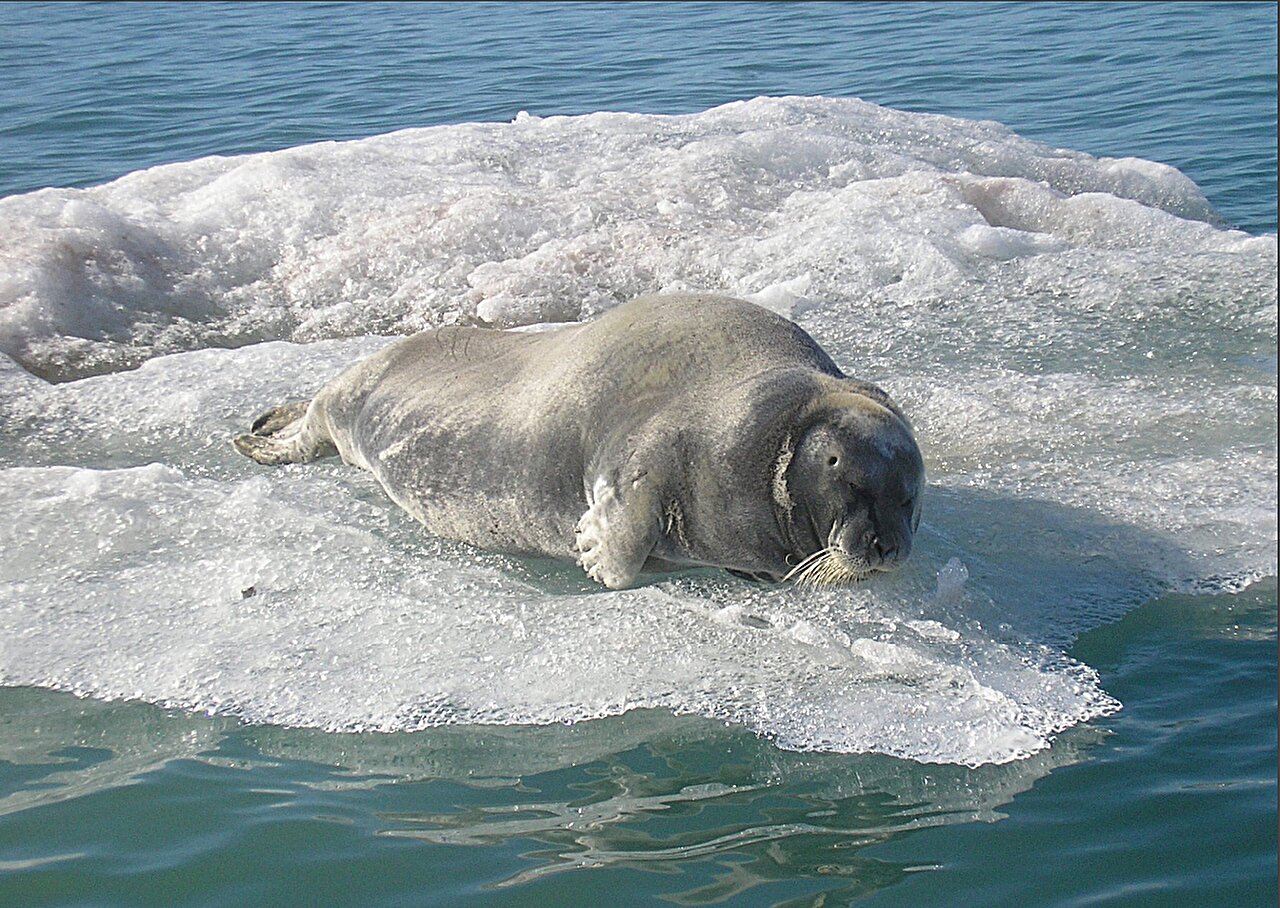"Thanks to this elaborate structure in their nasal cavities, Arctic seals lose less heat through nasal heat exchange than subtropical seals when both are exposed to the same conditions," says corresponding author and physical chemist Signe Kjelstrup of the Norwegian University of Science and Technology.
"This provides an evolutionary advantage, especially in the Arctic where heat loss is energy dissipation, which must be replenished by food."
"What's so amazing is that these Arctic seals retain 94% of the water when they breathe in and out," says Kjelstrup.
"This means that most of the water added to the air during inhalation is then recovered during exhalation."
In cold, dry environments, animals lose heat and moisture just by breathing.
Most mammals and birds have complex bones called maxilloturbinates inside their nasal cavities that help to minimize this risk.
These porous, bony shelves are covered with a richly vascularized layer of mucosal tissues that warm and humidify inhaled air, which is important for lung function, and reduce the amount of heat and moisture lost during exhalation.
The structure of these bones varies between species, however.
Kjelstrup's team previously showed that reindeer noses enable efficient heat exchange in cold conditions, but because reindeer don't live in diverse environments, they turned to seals to test whether there's anything special about the noses of Arctic animals.
"You can't find reindeer in the middle of the Mediterranean, but seals live in many different environments, so they allowed us to test this question," says Kjelstrup.
"And we knew from a previous study that Arctic seal noses are sponge-like and very dense, whereas the Mediterranean seal nose has a more open structure."
The researchers used computer tomography to make 3D models of the nasal cavities/maxilloturbinates of an Arctic species of seal, the bearded seal (Erignathus barbatus), and a subtropical species, the Mediterranean monk seal (Monachus monachus). Then, they used energy dissipation models to compare the seals' ability to warm and moisten air during inhalation and to reduce heat and moisture loss during exhalation.
The team tested both seals under Arctic conditions (−30°C), and at 10°C, which would represent a cold day for a Mediterranean monk seal.
They also tweaked different parameters within the model to identify geometrical features of the nasal cavity that are important for its function.
The model indicated that Arctic seals are much more efficient than subtropical seals at retaining heat and water exchange in both Arctic and Mediterranean ambient temperatures.
At −30°C, the subterranean seals lost 1.45 times as much heat and 3.5 times as much water per breath cycle as the Arctic seals, and at 10°C, the subterranean seals lost 1.5 times as much heat and 1.7 times as much water.
This advantage was due to the Arctic seal's more complex, dense nasal cavity.
Specifically, the researchers showed that the increased perimeter of the Arctic seal's maxilloturbinates is key to limiting energy dissipation at low ambient temperatures.
The study investigated moisture and heat loss per breath cycle (i.e., for one inhalation and exhalation), but the role of breathing rate remains unclear.
This is especially complicated for seals, who pause their breathing for minutes at a time when they dive.
In the future, the researchers hope to study the nasal structures of other species to see if different structures provide evolutionary advantages in other environments.
"The camel, for instance, doesn't need to save much on heat, but it does need to save on water, so one may speculate that it could tell us something about relative importance of the two," says Kjelstrup.
Ultimately, the researchers plan to use this information to engineer more efficient heat exchangers and ventilation systems.
"If nature manages to create such great heat exchangers, I think we should copy that in engineering to create more efficient processes, for instance, in air conditioners," says Kjelstrup.
This research was supported by the Research Council of Norway and the Tromsø Research Foundation.
